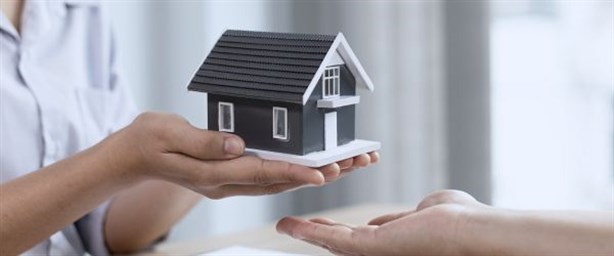Ultimate Guide for HOA Transition Success: From Developer to Homeowner Control
Transitioning an association from a developer-controlled Board to a homeowner-controlled Board can be a complex process with various challenges. However, with careful planning and execution, it can be a smooth and successful endeavor. In this guide, we'll explore the essential steps and considerations for the newly elected HOA Board members to ensure a seamless transition, along with insights on how partnering with AAM, LLC, a professional HOA management company, can streamline the process.
.
Understanding HOA Transition
Transitioning control from the developer to the homeowners marks a significant milestone in the life cycle of any homeowners association. Initially, the developers sit on the Board of the association, overseeing construction, establishing governance structures, and managing common areas. However, as the community matures and more homeowners move in, the transfer of control occurs, shifting authority from the developer to the owners. Control usually transitions to the association after a specific percentage of homes have closed. The HOA’s governing documents or state statutes typically outline specific criteria and timelines dictating when association control can be transferred to its members.
Ideally, this transition process unfolds gradually, allowing owners to become increasingly involved in the association’s operations and decisions. Some associations facilitate this transition by forming homeowner committees — such as transition, finance, management, or insurance committees—providing valuable training opportunities for future Board members on how to effectively govern the association.

.
Roles and Responsibilities of the Board
Before the transition of control from the developer to the homeowners, it is advisable to establish a Transition Committee consisting of homeowners. The establishment timeline of the Transition Committee will depend greatly on the size and scope of the community. This Committee should undergo training sessions to familiarize themselves with the association's operations and the roles and responsibilities of Board members. This early preparation ensures a smooth transition and allows the community management company to educate homeowners who may consider running for the Board of Directors.
As the newly elected homeowner-controlled Board takes over, they are responsible for ensuring a smooth transition, with the support from their HOA management company. This collaborative effort involves acquiring crucial information from the developer, meticulously reviewing documents, and crafting a strategic plan for governance and operations. Thoroughness and attention to detail are paramount during this phase, with the management company's assistance, to prevent oversights or disruptions.

.
Tips for a Successful Transition from Developer to Homeowner Control
.
Form a Transition Committee
To manage the transition of an HOA effectively, it's crucial to consider benchmarks and timeframes outlined in the governing documents regarding when control can or should be turned over to its members. Establishing a transition committee before the designated transition date ensures the presence of qualified individuals throughout the process. This committee should comprise of homeowners and at least one industry expert well-versed in development and associations. Transition planning should commence well before the turnover date, involving collaboration between homeowners, Board members, and developers.
.
Develop a Transition Plan
A well-defined transition plan is essential for a successful turnover. This plan should outline key milestones, responsibilities, and timelines for the transition process. It should also address any legal or regulatory requirements that must be fulfilled during the transition period.
.
Establish Clear Communication Channels
Cultivate a culture of openness and clarity in communication with Board members, homeowners, and stakeholders during the transition phase. Elevate engagement levels by employing diverse communication avenues, including regular email bulletins and interactive community gatherings. Effective communication stands as the cornerstone of a successful transition. The HOA Management company plays a pivotal role in this process, diligently supporting Boards with expertise and resources to facilitate transparent dialogue and swift resolutions.
.
Gather Essential Documents and Records
As part of the transition process, the developer must provide the homeowner Board with all necessary documents and records related to the HOA. These may include governing documents (such as the Declaration of Covenants, Conditions, and Restrictions), financial records, architectural guidelines, insurance policies, and maintenance schedules. Reviewing these documents is crucial for the homeowner Board to fully understand the HOA's operations and obligations. Documentation should include:
- The recorded Declaration (original or certified).
- The Articles of Incorporation.
- A comprehensive listing of owners
- Contact information for owners.
- Current bylaws and meeting minutes.
- Rules and regulations.
- Tangible property.
- All association funds.
- Accounting of financial statements.
- The Financial Records of Association.
- Active insurance policies.
- Manufacturers, contractors, subcontractors, and suppliers’ warranties.
- Copies of service and employment contracts.
.
Conduct Comprehensive Due Diligence
This may involve reviewing financial records and evaluating existing contracts and agreements.
.
Transition Meeting
The transfer of control from the developer to the homeowners is formalized through a transition meeting. During this meeting, the developer officially relinquishes control of the association to the newly elected homeowner Board of Directors. The meeting may also involve discussions about ongoing projects, financial matters, and the transfer of essential documents and records
.
Evaluate the Condition of the Community
Newly elected HOA Board members should assess the community's health and incorporate professionals to assist. Those items for assessment should include:
- Review the reserve study to determine if you are well-funded.
- Reviewing the community budget.
- Potentially getting an audit done to ensure financial health.
- Working with an insurance agent to ensure the community is properly covered.
- Make sure you have received the deeds for the common areas.
- Get training on understanding your responsibilities as a Board member.
.
Ensure Legal Compliance
Ensure compliance with all legal requirements, including ownership transfer of common areas and updating insurance policies. Your HOA Management team can provide guidance and support throughout the legal process.
.
Professional Support
To navigate the transition process successfully, homeowner Boards may enlist the support of professional HOA management companies, legal advisors, and financial consultants. These professionals can provide expertise, guidance, and support in areas such as governance, financial management, and compliance with legal requirements. Partnering with trusted professionals can help ensure a smooth transition and set the stage for the long-term success of the HOA.

.
Effectively Transition
By following these tips and tapping into the expertise of professionals, HOA Board members can confidently steer the transition process, paving the way for the sustained success of their community. With a solid understanding of the basics of the transition process and the support of professional services where needed, homeowner Boards can effectively transition to homeowner control with clarity and confidence.
As you incorporate these fundamentals into your transition plan, rest assured that AAM, LLC is ready to accompany you on this journey, providing invaluable support, resources, and guidance every step of the way. Together, we can ensure a seamless and successful transition, laying the foundation for a thriving and well-managed community for years to come.
For more information and expert guidance on HOA transitions, feel free to contact AAM, LLC – your trusted partner in HOA management excellence.
Disclaimer: The information provided in this guide is for educational purposes only and should not be construed as legal or financial advice. It is recommended to consult with qualified professionals for specific guidance tailored to your HOA's unique circumstances.
